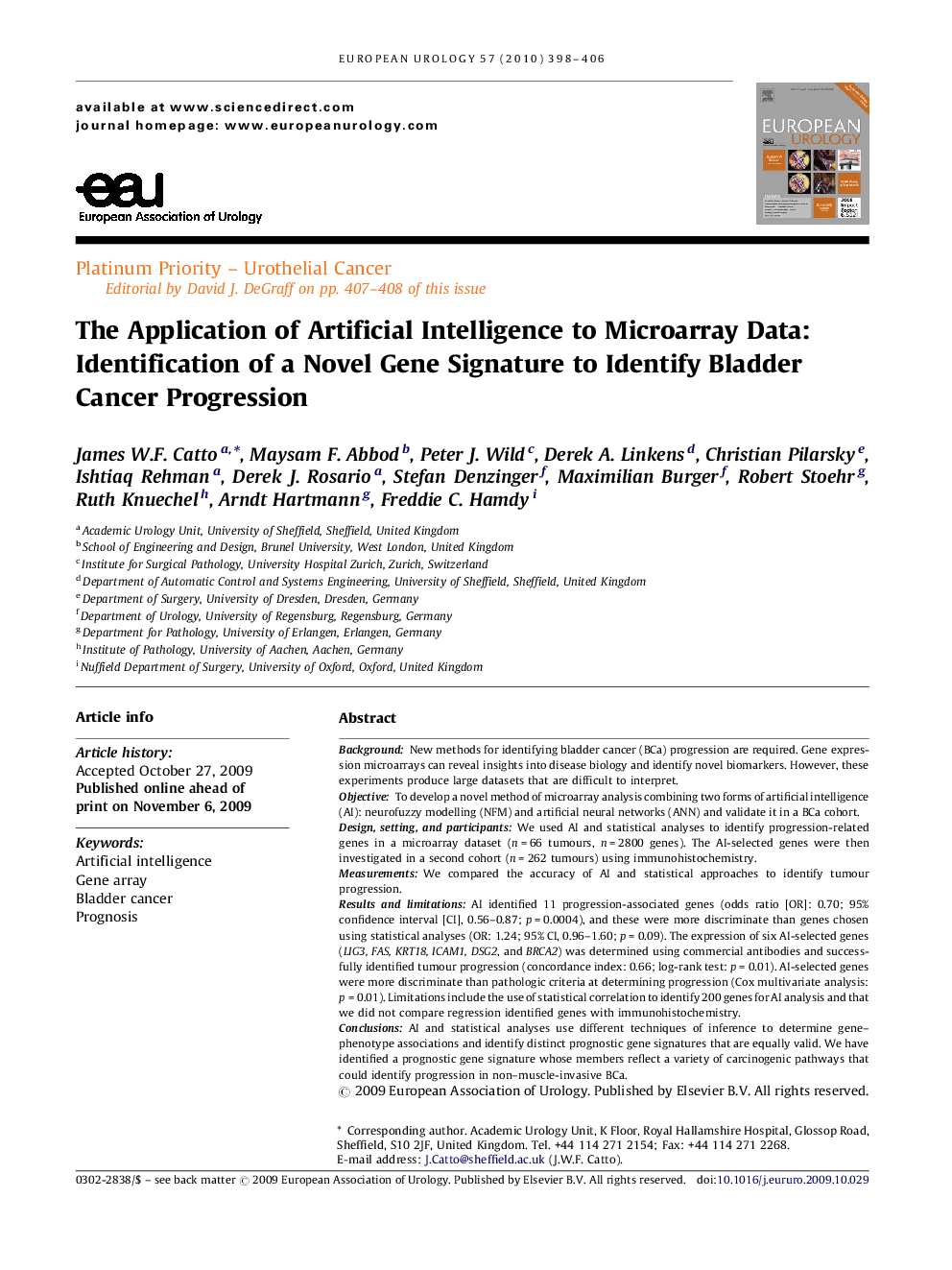| کد مقاله | کد نشریه | سال انتشار | مقاله انگلیسی | نسخه تمام متن |
|---|---|---|---|---|
| 3926975 | 1253160 | 2010 | 9 صفحه PDF | دانلود رایگان |

BackgroundNew methods for identifying bladder cancer (BCa) progression are required. Gene expression microarrays can reveal insights into disease biology and identify novel biomarkers. However, these experiments produce large datasets that are difficult to interpret.ObjectiveTo develop a novel method of microarray analysis combining two forms of artificial intelligence (AI): neurofuzzy modelling (NFM) and artificial neural networks (ANN) and validate it in a BCa cohort.Design, setting, and participantsWe used AI and statistical analyses to identify progression-related genes in a microarray dataset (n = 66 tumours, n = 2800 genes). The AI-selected genes were then investigated in a second cohort (n = 262 tumours) using immunohistochemistry.MeasurementsWe compared the accuracy of AI and statistical approaches to identify tumour progression.Results and limitationsAI identified 11 progression-associated genes (odds ratio [OR]: 0.70; 95% confidence interval [CI], 0.56–0.87; p = 0.0004), and these were more discriminate than genes chosen using statistical analyses (OR: 1.24; 95% CI, 0.96–1.60; p = 0.09). The expression of six AI-selected genes (LIG3, FAS, KRT18, ICAM1, DSG2, and BRCA2) was determined using commercial antibodies and successfully identified tumour progression (concordance index: 0.66; log-rank test: p = 0.01). AI-selected genes were more discriminate than pathologic criteria at determining progression (Cox multivariate analysis: p = 0.01). Limitations include the use of statistical correlation to identify 200 genes for AI analysis and that we did not compare regression identified genes with immunohistochemistry.ConclusionsAI and statistical analyses use different techniques of inference to determine gene–phenotype associations and identify distinct prognostic gene signatures that are equally valid. We have identified a prognostic gene signature whose members reflect a variety of carcinogenic pathways that could identify progression in non–muscle-invasive BCa.
Journal: European Urology - Volume 57, Issue 3, March 2010, Pages 398–406